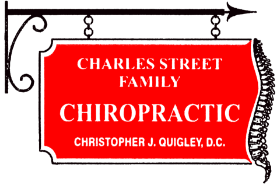There has been a meteoric rise in the number of Ulnar Collateral Ligament (UCL) or Tommy John surgeries among all levels of baseball pitchers. In the three years from 1995-1997 the average growth of UCL surgery in youths averaged 5.6% and between 2009-2011 the average growth rate was 26.6 percent.1 In fifteen short years the rate has quintupled! Did elbows change in those years? Is pitching that much different from 15 years ago?
One thing that has changed is the introduction of nonsteroidal anti-inflammatory medication (NSIAD’s) into all levels of sports. This was recently on display at a recent 18U baseball tournament my son was participating in.
My son plays with a different fall travel team than his summer team and while we were at a recent tournament, two of those fall team players were playing in the game prior to our game. One was pitching, Nolan and the other was his catcher. During the third inning, the pitcher calls to his coach that he was having some arm and elbow trouble. The coach goes out to him and checks out his arm and decides that it is a muscle strain and he removes the pitcher from the game. Within two minutes of his removal from the game, the call goes out through the parent section, “Does anyone have any Advil for Nolan?” It catches my attention. I am quite concerned. Unbeknownst to the others, I have written a book on how to heal from car accident injuries and I am proof reading it between innings. I am quite familiar with the research that says “NSIADS for acute injuries cause injured ligaments not to heal as well as they could.” The research is in my book. I grab Nolan’s dad and show him the research that NSAIDS inhibit ligament healing, and thus leads to impaired mechanical strength. It dawns on me that this could be the cause of the epidemic?
Hauser in the Open Rehabilitation Journal, 2013, vol. 6, an article with 203 references, does a great job discussing the hazards of ligament exposure to NSAIDS:
“Anti-inflammatory drugs are only mildly effective in relieving the symptoms of most muscle, ligament and tendon injuries and are potentially deleterious to soft tissue healing. There are valid reasons to expect that NSAIDs might have an adverse effect on healing, since prostaglandin-induced inflammation is an early sequel in the cascade of injury induced events.”
“However NSAIDs are known to specifically block the cyclooxygenase (COX) enzymes which catalyze the conversion of arachidonic acid to prostaglandins which otherwise play a significant role in ligament healing.”
“Because of the analgesic effect of NSAIDs, patients may feel no discomfort and ignore early symptoms of ligament injury, which could cause further damage to the ligament and thus, delay definitive healing.”
“Researchers have concluded that the use of these medications inhibits ligament healing, and thus, leads to impaired mechanical strength. Therefore, NSAIDs are no longer recommended for chronic soft tissue (ligament) injuries, and their use is cautioned in athletes who have ligament injuries. In the case of acute ligament injuries, NSAIDs should be used for the least time possible, if used at all.” 2
Unfortunately, people in our society take these powerful medications like candy. These medications have been linked to kidney damage3, gastrointestinal bleeding4,5, heart attack and stroke6,7,8, dementia and alzheimer’s,9 hearing loss10 and erectile dysfunction11.
Dr. James Andrews writes: “Observations by orthopedic surgeons… as the torn ulnar collateral ligaments in a pro pitcher usually looks as it has worn out over time.”4 I believe that baseball players of all ages are reaching for an NSAID when sore or have a minor injury which causes inhibition of the natural healing and repair mechanisms of the body leading to loss of strength and overtime, eventual rupture. I remember growing up a huge baseball fan seeing pitcher wrapped up with a huge ice pack on the arms after pitching. You don’t see that anymore. Are they taking an NSAID instead?
1. “Youth UCL Surgery (“Tommy John Surgery”).” American Sports Medicine Institute, July 2014. Web. 25 July 2015. .
2. Hauser, R.A. “Ligament Injury and Healing: A Review of Current Clinical Diagnostics and Therapeutics.” The Open Rehabilitation Journal 6.1 (2013): 1-20.
3. Perneger, Thomas V., Paul K. Whelton, and Michael J. Klag. “Risk of Kidney Failure Associated with the Use of Acetaminophen, Aspirin, and Nonsteroidal Antiinflammatory Drugs.” New England Journal of Medicine N Engl J Med 331.25 (1994): 1675-679. Web.
4. Cryer, Byron. “Nonsteroidal Anti-inflammatory Drug Gastrointestinal Toxicity.” New England Journal of Medicine N Engl J Med 15.6 (1999): 473.
5. Maroon, Joseph Charles, and Jeffrey W. Bost. “ω-3 Fatty Acids (fish Oil) as an Anti-inflammatory: An Alternative to Nonsteroidal Anti-inflammatory Drugs for Discogenic Pain.” Surgical Neurology 65.4 (2006): 326-31.
6. Helin-Salmivaara, A. “NSAID Use and the Risk of Hospitalization for First Myocardial Infarction in the General Population: A Nationwide Case-control Study from Finland.” European Heart Journal 27.14 (2006): 1657-663.
7. “Cardiovascular Safety of Non-steroidal Anti-inflammatory Drugs,.” British Medical Journal 16.3 (2011): n.
8. Olsen, A.-M. Schjerning, E. L. Fosbol, and J. Lindhardsen. “Duration of Treatment With Nonsteroidal Anti-Inflammatory Drugs and Impact on Risk of Death and Recurrent Myocardial Infarction in Patients With Prior Myocardial Infarction: A Nationwide Cohort Study.” Circulation 123.20 (2011): 2226-235.
9. Breitner, J.c.s., S. J.p.a. Haneuse, and R. Walker. “Risk of Dementia and AD with Prior Exposure to NSAIDs in an Elderly Community-based Cohort.” Neurology 72.22 (2009): 1899-905.
10. Curhan, Sharon G., Roland Eavey, and Josef Shargorodsky. “Analgesic Use and the Risk of Hearing Loss in Men.” The American Journal of Medicine 123.3 (2010): 231-37.
11. Gleason, Joseph M., Jeffrey M. Slezak, and Howard Jung. “Regular Nonsteroidal Anti-Inflammatory Drug Use and Erectile Dysfunction.” The Journal of Urology 185.4 (2011): 1388-393. Web.
12. “Position Statement for Tommy John Injuries in Baseball Pitchers.” American Sports Medicine Institute | Research. American Sports Medicine Institute, July 2014. Web. 25 July 2015. .
